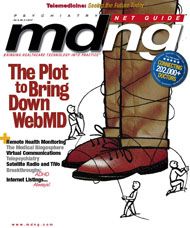TechSector: Virtual Communication Technology Saves Time and Money
"Telemedicine," one of the latest buzzwords in the medical technology industry, is a concept that represents a paradigm shift in information management processes.
"Telemedicine,” one of the latest buzzwords in the medical technology industry, is a concept that represents a paradigm
shift in information management processes. Telemedicine makes it easy to manage patient data across different platforms nationally and quickly. Some of the same technology employed in telemedicine can also enable virtual communication between practices and their patients. The missing link to this point has been the availability of an intelligent medical practice patient communication system that goes far beyond traditional client/server-based “reminder” solutions.
Cellminder fills this void, allowing even practices that still use older scheduling and patient management systems to upgrade their one-way patient communications to include the functions of automatic routine reminders, recall/recare, wellness communications, and contacting patients who desire earlier appointments following late cancellations. Cellminder takes virtual communications to the next level by reducing the time needed to manage routine one-way conversations, increasing profi tability, enhancing patient
satisfaction, and improving quality and continuity of care.
Current Solutions
Most commercial solutions for reminding patients of their appointments are based on telemarketing-type servers that use offi ce phone lines to deliver messages—mostly to home answering machines. They do help to reduce the many hours required for practices to manually call their patients, and they help to reduce revenue losses due to no-show patients. However, these systems are often slow and ineffective, relying on a transactional methodology that is based on communicating with patients one at a time.
To achieve true and complete one-way communication management status, the IT department at Cellminder rethought the entire
methodology and process of patient communication management.
Advanced Methodology and Software Platform
The virtual communications software platform deployed by Cellminder was built based on extensive interviews with practice administrators, front desk personnel, and doctors dissatisfi ed with their current patient communications and desiring
a system that was user-friendly for even the least sophisticated practice staff . The value in using this form of technology stems from the diff erence between “oneway” and “two-way” practice-to-patient communications. Virtual communications technology is far more effective and effi cient for one-way messaging, saving medical practices many thousands of dollars per month, as well as helping to generate revenue when dealing with the roughly 80% of practice-to-patient communications that are one-way in nature.
Clients access the virtual communications management toolset online, similar to other software as a service (SAS) models like Quickbase and Salesforce.com. Double entry of patient contact and appointment information is eliminated through data integrations that synchronize easily with any practice management system that can export a text-delimited file.
Unlike most “reminder” systems, Cellminder requires little or no end-of-day export activity, as all future appointments, new patients, and changes to existing appointments are automatically updated each day. The virtual communications platform also relies on specific patient preferences to enable practices to communicate more effectively.
Concurrent Messaging
Virtual communications eliminates using practices’ phone lines completely, although the Caller ID reveals the practice’s name and phone number. This means that patients are contacted nearly concurrently rather than consecutively, as with manual or even server-based systems, plus, with Cellminder the practice’s phone lines remain available for inbound and outbound two-way communication calls.
Virtual communication technology allows practices to customize their own patient communications based on their patients’ demographics, communications preferences, and personal schedules, plus additional content that can be delivered by various means.
No Double Entry
Through synchronization with practice management and EMR software, practices only need to access the virtual communications website directly for less than two hours per month, mostly to view and print reports on all their one-way communications activity or to contact any number of patients immediately for any sudden schedule change. Virtual communication is the perfect partner for practices upgrading their practice management system to an EMR with telemedicine capabilities, and Cellminder is the only communications solution marketing this technology.
Gary Szasz is Founder and Senior Vice President of Cellminder, Inc.
